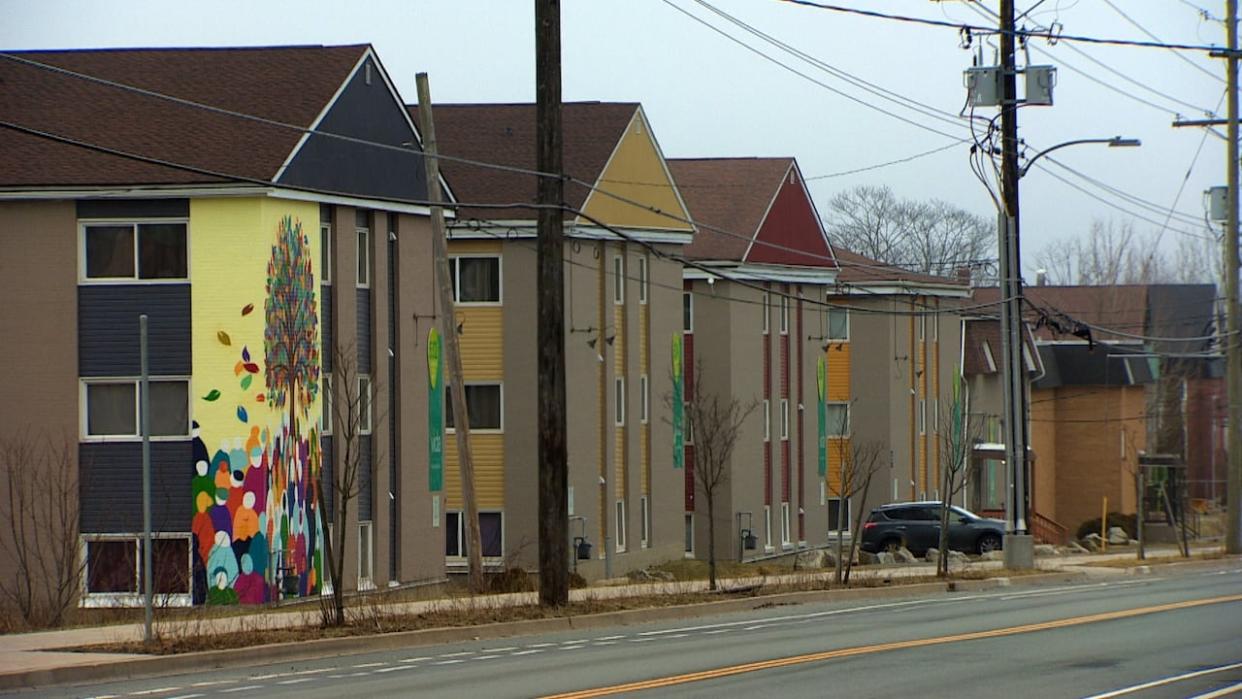New analysis shows significant loss of affordable rentals in low-income Halifax neighbourhood

A new data mapping tool is shedding light on the loss of affordable rental housing in six cities across Canada — including Halifax's Spryfield neighbourhood.
The Canadian Centre for Housing Rights compiled data from dozens of federal, provincial and municipal sources over nearly 20 years to create its low-end of market rental housing monitor, which examines factors like housing costs, evictions and vacancy rates in specific census areas.
In Halifax, it focused on the traditionally low-income community of Spryfield, finding it had the highest proportion of affordable housing, but also some of the greatest loss.
Researchers concluded the Spryfield area located south of the Halifax peninsula lost 39 per cent of its most affordable single-person rental units between 2016 and 2021.
"We're specifically focusing on the most affordable end of the market," said Megan Earle, data scientist and project leader. "And when we lose that most affordable end of the market, there's nowhere else for people to go.
"So ultimately when we lose that affordable housing, it becomes a pathway to homelessness."

Christina Carter, executive director of Chebucto Connections, said rising rents are pushing people out of the Spryfield neighbourhood, but they have nowhere else to go. (Brian MacKay/CBC)
The latest census data shows 42.2 per cent of Spryfield's 8,358-person population are renters, and 39.7 per cent of those people are in dwellings considered unsuitable, inadequate or unaffordable under Canada Mortgage and Housing Corporation standards.
Christina Carter, executive director of Chebucto Connections, a non-profit organization that works with low-income people in Spryfield, said she isn't surprised by these findings because she sees the impacts of the housing crisis every day.
"There just is nowhere for people to go anymore," Carter said. "We had an individual who worked all of their life, now they live in a car or they're couch surfing. They have a pension, this is just the reality of it now."
Carter said Chebucto Connections gives out free food boxes to 180 people every two weeks, and housing is the most pressing concern for most of them.
New way to look at the data
Earle believes the low-end housing monitor is the first of its kind.
"To date, nobody's really integrated the federal data or the Statistics Canada data with municipal sources and administrative data as well as the landlord-tenant board data," Earle said. "So by pooling all of these data sources together, what you get is a more nuanced understanding of information relating to housing."
The project determined affordable rents for each city based on median incomes and size of renter families. In Halifax, that would be rent of $870 for a single person and up to $1,750 for families of four or more.
Earle said she hopes governments and policymakers will use the data to make housing decisions, but she also hopes community organizations and renters themselves will make use of the information.
"I think most people don't know about the history of their building or their region," she said. "And to be able to look at what's been happening in their neighborhood over time, I think could be really empowering."
Where is the housing going?
Earle said factors like building age and need for repairs, or recent turnover in building ownership may help explain this loss in affordable units.
Spryfield's census tract is known for having a large number of rental homes, mainly built in the 1970s. However, Earle said there has been very little construction of rental units after 1980.
The research also found many of the buildings in this neighbourhood have been in violation of Halifax's residential building safety standards in recent years — with the Spryfield area having the most reports filed per residential building than any other census tract.
Carter said she also sees fixed-term leases which don't automatically renew every year causing high tenant turnover. And since the province's temporary rent cap doesn't apply to new tenants, rents are being raised often.
"It's just sad to see folks that have grown up in this community get run out, making room for other people that I guess can afford it."
MORE TOP STORIES

